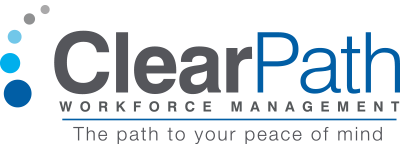Lessons to be Learned from the Recent Surge in EEOC Sexual Harassment Lawsuits
No one wants to be on the receiving end of a sexual harassment lawsuit due to employee misconduct. While this may seem like an unlikely scenario, it happens more than you might think.
There has been a large increase in sexual harassment lawsuits filed by the U.S. Equal Employment Opportunity Commission (EEOC) over the last five years and this trend does not seem to be slowing down anytime soon.
Brandon Business Owner was bowled over when he received notice from the EEOC that an employee at his company had filed charges. He thought everything was fine and that his company’s anti-harassment policies were foolproof until he found himself facing an EEOC lawsuit. Plan for the future and protect your business by remaining compliant. Here are four steps that will help you and your business.
1. Understanding the EEOC’s Role and Title VII
The EEOC is the federal agency responsible for enforcing Title VII of the Civil Rights Act of 1964, which prohibits employment discrimination based on various factors, including sex. While sexual harassment is not explicitly mentioned in Title VII, it falls under the umbrella of sex discrimination in Title VII. The EEOC has been increasingly vigilant, with a 19.82% increase in workplace discrimination charges in fiscal year 2022 alone. The EEOC budget increased four years earlier, in their first budget increase in eight years. This has had an effect on their ability to effectively enforce Title VII, and the statistics are showing exactly this..
Familiarize yourself with Title VII and the EEOC’s role in enforcing it. Remember in many states employers are required by law to have anti-harassment policies and conduct anti-harassment training. Federal courts have shown that employers who do not provide training may lose their ability to avoid punitive damages in a harassment case.
2. The Rising Trend of Sexual Harassment Lawsuits
The EEOC has been increasingly active in filing sexual harassment lawsuits. Between FY 2018 and FY 2021, the agency received 98,411 charges alleging harassment, with 27,291 specifically alleging sexual harassment. Recent cultural awareness has played a significant role in encouraging victims to come forward and feel empowered to tell their stories. This shift in culture means that you cannot wait until troubles arise, you need to be proactive in stopping workplace harassment before it begins.
Take proactive measures to safeguard your organization. It is the responsibility of the employer to make it easy for employees who allege that they are being sexually harassed to report the behavior. Employee complaints should be investigated promptly. Making sure that all employees are aware of their rights and responsibilities in the workplace through policies and training will help you to stay compliant and avoid settlements. Keep an eye on EEOC statistics and trends as you move forward and remain compliant.
3. The Tangible and Intangible Costs
Sexual harassment harms the victims, but the damage does not stop there; it also has a ripple effect throughout your organization. The EEOC recovered $513.7 million for victims in 2022, impacting the financial health of many businesses. Moreover, the mental health of employees is at risk, affecting work performance and employee well-being.
Laws are in place for a reason, compliance strengthens your entire organization. Consider the broader impact of sexual harassment on your company as well as the legal ramifications. Addressing this issue is a legal requirement and a moral obligation.
4. Ensuring Compliance and Fostering a Safe Workplace
To mitigate the risk of EEOC lawsuits, it’s crucial to have stringent compliance measures in place. This includes clear anti-harassment policies, accessible reporting mechanisms, and regular training programs which are mandatory in many states. Legal compliance avoids lawsuits and creates a safe and inclusive work environment.
Regularly update your anti-harassment policies and training programs and make sure to communicate these updates to all employees to ensure everyone is on the same page. To find out if your state requires you to hold regular training sessions see our Mandatory Training Guide. A detailed written policy that clearly outlines your anti-harassment policy will help your employees understand what their rights are as well as what is expected of them. Protect your business from potential lawsuits by documenting your policies. Include a statement of zero tolerance for harassment and discrimination and publish an equal opportunity statement in your handbook.
The surge in EEOC sexual harassment lawsuits is a wake-up call for all organizations. It’s about legal compliance and creating a workplace where everyone feels safe and respected. By taking these steps, you’re protecting your organization from legal repercussions. You are also making a positive impact on your employees’ lives.
Contact us for expert guidance on navigating the complexities of EEOC compliance, so you can focus on what you do best—running your business.
ClearPath is a leading Human Resources Outsourcing company focusing on assisting employers to leverage the independent contractor labor market. We’re committed to helping business owners stay compliant and minimize the risks associated with their contingent labor requirements.
No Legal Advice Intended. This article includes general information about legal issues and developments in the law. Such materials are for informational purposes only and may not reflect the most current legal developments. These informational materials are not intended, and must not be taken, as legal advice on any particular set of facts or circumstances. You need to contact a lawyer licensed in your jurisdiction for advice on specific legal issues.
- Written by: Renee Fink
- Posted on: October 23, 2023
- Tags: 1099, 1099 Worker Classification, ENGAGING W-2 WORKERS, FREELANCER, INDEPENDENT CONTRACTOR COMPLIANCE, independent contractor management, Workforce Classification

